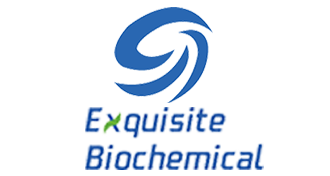Erythorbic acid, a white and odorless crystalline powder, serves as an antioxidant in various food products. It is soluble in water and shares a chemical structure with ascorbic acid (vitamin C), hence possessing similar antioxidant properties. To boost the efficacy of other food additives, erythorbic acid is commonly combined with them.
Chemical Properties
The appearance of erythorbic acid is in the form of crystals or powder, which are either white or slightly yellow in color. However, when it is exposed to light, it undergoes a gradual darkening process.
Uses
The brewing industry relies on antioxidants, both in industrial and food applications. These compounds play a crucial role in preventing oxidation and maintaining the quality of brewed beverages. Additionally, antioxidants are commonly used as reducing agents in photography to achieve desired photographic effects.
Erythorbic Acid, a food preservative, acts as an antioxidant due to its strong oxygen-reducing properties. While it exhibits non-reactive behavior in dry crystalline form, when dissolved in water it quickly reacts with oxidizing agents and atmospheric oxygen. Proper preparation and storage are essential, as it should be kept at low temperatures and protected from air exposure. At 25°C, its solubility in water is 43 g/100 ml. In its pure form, one part is equal to one part of both ascorbic acid and sodium erythorbate. Erythorbic Acid is highly effective in preventing the deterioration of color and flavor in fruits when used in concentrations ranging from 150 to 200 ppm. Additionally, it is used in meat curing to speed up the nitrite curing reaction and preserve the color of cured meat, with recommended usage levels of 0.05%.
As a food additive, Erythorbic Acid serves a purpose as both an antimicrobial and antioxidative agent. Its ability to act as a preservative and prevent spoilage makes it a valuable ingredient in many food products. Additionally, Erythorbic Acid's antioxidative properties help extend the shelf life of food items. When used in moderation, this additive can be an effective and safe way to keep food fresh and flavorful for longer periods of time.
Production Methods
Erythorbic acid, a compound widely used as a food additive and antioxidant, can be obtained through various synthesis methods. One of the common routes involves the reaction between methyl 2-keto-D-gluconate and sodium methoxide. Additionally, this versatile acid can also be synthesized from sucrose, a common disaccharide, and can be produced by certain species of Penicillium fungi. These various routes provide different options for the production of erythorbic acid, catering to the specific requirements and preferences of manufacturers in different industries.
Biotechnological Production
D-erythroascorbic acid, a C5 sugar acid, is synthesized by yeasts and other fungi. It shares both structural and physicochemical properties with Asc, which is essential for plants and animals as a protective agent against reactive oxygen species. Similar to Asc, D-erythroascorbic acid plays a crucial role in scavenging these harmful species in microorganisms.
The biosynthesis of D-erythroascorbic acid begins with the utilization of D-arabinose derived from decaying plant material by the microorganism. Initially, D-arabinose, likely in its 1,4-furanosidic isomeric form, is oxidized by specific dehydrogenases that utilize NAD(P)+. This oxidation leads to the formation of D-arabinono-1,4-lactone. Subsequently, D-arabinono-1,4-lactone undergoes further oxidation mediated by D-arabinono-1,4-lactone oxidase, ultimately resulting in the production of D-erythroascorbic acid.
In Saccharomyces cerevisiae, resting cells have the ability to synthesize Asc through different pathways. L-galactose, L-galactono-1,4-lactone, or L-gulono-1,4-lactone can be utilized as substrates in the biosynthetic pathway leading to D-erythroascorbic acid. These pathways are naturally employed by S. cerevisiae to synthesize Asc effectively.
In summary, yeasts and other fungi biosynthesize D-erythroascorbic acid, a C5 sugar acid with similar properties to Asc. This compound serves important protective functions in microorganisms by scavenging reactive oxygen species. The biosynthetic process involves the oxidation of D-arabinose to D-arabinono-1,4-lactone, followed by its further oxidation to D-erythroascorbic acid by D-arabinono-1,4-lactone oxidase. Moreover, S. cerevisiae has the capability to synthesize Asc from various substrates, such as L-galactose, L-galactono-1,4-lactone, or L-gulono-1,4-lactone, using the pathway naturally utilized for D-erythroascorbic acid production.
Specifications
Erythorbic acid, regulated by the Food and Drug Administration (FDA), is a reliable and safe food additive. With a molecular weight of 176.12 g/mol and a chemical formula of C6H8O6, it possesses great potential as an effective ingredient. The purity level of erythorbic acid used in various food products generally falls within the range of 98-100%. It's reassuring to know that this additive undergoes strict regulation to ensure its quality and safety for consumers.
Applications
Erythorbic acid is a versatile preservative that is utilized in numerous food products including meat, seafood, and poultry to prevent discoloration and spoilage. Apart from this, it is extensively used as an antioxidant in canned vegetables and fruits, baked goods, and beverages. The cosmetics industry has also found applications of erythorbic acid as a preservative and antioxidant.
Storage Condition
Erythorbic acid should be stored in a cool, dry place, away from direct sunlight and heat sources. The recommended storage temperature is below 25°C (77°F). Erythorbic acid should be kept in its original packaging or in a sealed container, protected from moisture and air. When stored properly, erythorbic acid has a shelf-life of at least 2 years.
Hot Tags: erythorbic acid, China erythorbic acid manufacturers, factory






